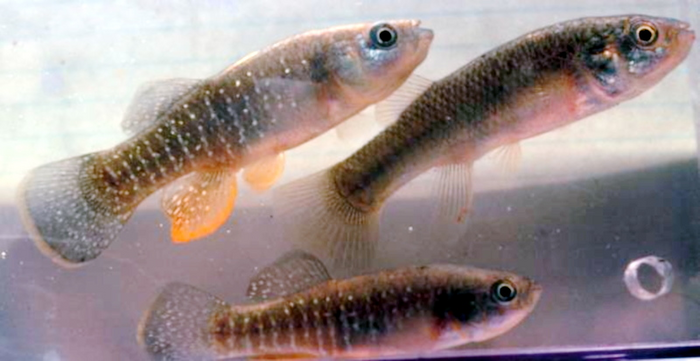AMHERST, Mass. – Human-released greenhouse gasses are causing the world to warm, and with that warming comes increasing stress for many of the planet’s plants and animals. That stress is so great that many scientists believe we are currently in the midst of the “sixth extinction,” when entire species are disappearing up to 10,000 times faster than before the industrial era. However, scientists have been uncertain which ecosystems, and which species, are most at risk. New research, recently published in Nature Climate Change, is the first to show that the focus on species-level risk obscures a wide variability in temperature tolerance, even within the same species, and that this variability is greater for marine species than terrestrial ones. The findings have immediate implications for management and conservation practices and offer a window of hope in the effort to adapt to a rapidly warming world.

Credit: NOAA
AMHERST, Mass. – Human-released greenhouse gasses are causing the world to warm, and with that warming comes increasing stress for many of the planet’s plants and animals. That stress is so great that many scientists believe we are currently in the midst of the “sixth extinction,” when entire species are disappearing up to 10,000 times faster than before the industrial era. However, scientists have been uncertain which ecosystems, and which species, are most at risk. New research, recently published in Nature Climate Change, is the first to show that the focus on species-level risk obscures a wide variability in temperature tolerance, even within the same species, and that this variability is greater for marine species than terrestrial ones. The findings have immediate implications for management and conservation practices and offer a window of hope in the effort to adapt to a rapidly warming world.
“One of the most important biological discoveries in the last century is that evolution can happen much more quickly than previously thought,” says Brian Cheng, professor of marine ecology at the University of Massachusetts Amherst and the paper’s senior author. “One of the implications of this is that different populations of the exact same species can adapt to their local environments more readily than traditional biology would have thought possible.”
It turns out that this rapid, localized adaptation may be able to help ensure survival in a warming world.
By conducting a metanalysis of 90 previously published studies, from which Cheng and his co-authors mined data on 61 species, the team was able to construct a set of “upper thermal limits”—specific temperatures above which each species could not survive. However, by zooming in further and looking at 305 distinct populations drawn from that pool of 61 species, they found that different populations of the same marine species often had widely different thermal limits. This suggests that some populations have evolved different abilities to tolerate high temperatures. The key then, is to keep different populations of the same species connected so that the populations that have adapted to the higher temperatures can pass this advantage on to the populations with the lower thermal limits.
In other words, imagine a wide-ranging marine species, such as the diminutive Atlantic killifish, which occurs from the warm Florida coast of the United States north to the frigid waters of Newfoundland, Canada. The northern killifish populations may be better able to withstand warming waters if some of their southern kin are able to naturally shift their range to the north.
“Scale matters,” says Matthew Sasaki, a marine biologist and evolutionary ecologist who completed this research as part of his postdoctoral fellowship at the University of Connecticut and is the paper’s lead author. “The patterns you see across species aren’t the same you see within species, and the big-picture story doesn’t necessarily match what is happening on the local level.”
In yet another twist, the team, which was funded by the National Science Foundation and was composed of biologists specializing in terrestrial as well as marine ecosystems, discovered that this intra-species variability was primarily a feature of animals living in the ocean and intertidal areas. Populations of widespread species that live on land or in freshwater exhibit far more homogeneity in their thermal limits, and thus could be more sensitive to rising temperatures. However, on land, plants and animals can take advantage of microclimates to cool down and avoid extreme temperatures, by moving into shady spots, for example.
Taken together, the research suggests that a one-size-fits-all-species approach to conservation and management won’t work. Instead, write the authors, we need to understand how populations have adapted to their local conditions if we want to predict their vulnerability to changing conditions. A more effective approach would include ensuring that marine species can find wide swaths of undamaged habitat throughout their entire range, so that different populations of the same species can mix and pass on the adaptations that help them survive warmer waters. And on land, we need to maintain large patches of cool ecosystems—such as old-growth forests—that terrestrial species can use as refuges.
“The glimmer of hope here,” says Cheng, “is that with conservation policies tailored to individual populations, we can buy them time to adapt to the warming world.”
Contacts: Brian Cheng, [email protected]
Matthew Sasaki, [email protected]
Daegan Miller, [email protected]
Journal
Nature Climate Change
DOI
10.1038/s41558-022-01534-y
Article Title
Greater evolutionary divergence of thermal limits within marine than terrestrial species
Article Publication Date
1-Dec-2022





